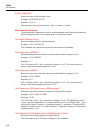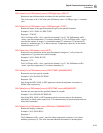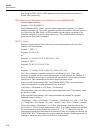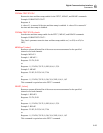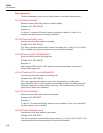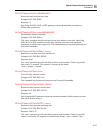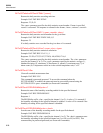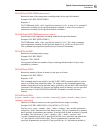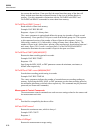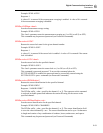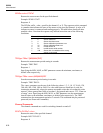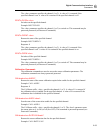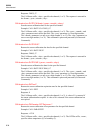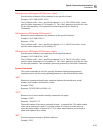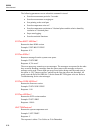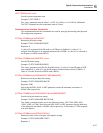
5020A
Users Manual
6-30
the current date and time. If not specified, the actual time/date range of the data will
likely include more data than requested because fo the sizes of the data blocks in
memory. Use this command in conjunction with the DATa:RECord:OPEN? and
DATa:RECord:READ? commands to extract data from memory.
DATa:RECord:READ? [<num>]
Reads a block of data from memory.
Example: DAT:REC:READ?
Response: <bytes>,#11<binary data>
The <num> parameter is optional and defines the group size (number of bytes) to read
from memory. If not specified, 256 bytes is used as the default group size. The response
to this command consists of the number of bytes of data in this response (<bytes>),
followed by a marker (#11), followed by a string of binary data (<binary data>). The
number of bytes in the <binary data> portion of the response may be anywhere between 1
and <num> bytes (256 if <num> is not specified). Use the DATa:RECord:OPEN?
command to determine the exact number of bytes in the open set of data.
DATa:RECord:TIME? [MIN|MAX|DEF]
Returns the data recording period in seconds.
Example: DAT:REC:TIME?
Response: 120
Specifying the MIN, MAX, or DEF parameter returns the minimum, maximum, or
default value respectively.
DATa:RECord:TIME <num>|MIN|MAX|DEF
Sets the data recording period setting in seconds.
Example: DAT:REC:TIME 60
The <num> parameter indicates the number of seconds between recording readings to
memory. Specifying the MIN, MAX, or DEF parameter sets the data recording period to
the minimum, maximum, or default value respectively. This command may be password
protected (see Password Commands).
Measurement Control Commands
The measurement control commands are used to access settings related to the sensors and
the measurement activities.
INITiate
Provided for compatibility but has no effect.
INITiate:CONTinuous?
Returns the continuous state, which is always 1.
Example: INIT:CONT?
Response: 1
SENSor:AVERage?
Returns the measurement average setting.



